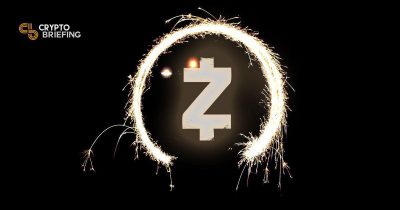Zcash Foundation Reveals FPGA Research Results
With little over a year of Founder's Reward left, it's time to prioritize.

Share this article
The Zcash Foundation has revealed the results of its latest research to create new hardware implementations of zk-SNARKs, which is expected to make Zcash (ZEC) network more efficient and affordable for end-users.
The Foundation’s research in Field-Programmable Gate Arrays (FPGAs) can accelerate the verification process of the blockchain itself, as well as the cryptographic and zk-SNARKS operations which are used to secure it, explained FPGA engineer and lead-researcher Ben Devlin.
This is the first time the Foundation has admitted to the existence of the FPGA project, which began in January this year. Under current plans, the research will continue to receive funding until October.
“Our hope is that it will lead to faster and more efficient node syncs and lead to broader zk-SNARK adoption, beyond just Zcash,” explained Josh Cincinnati, the Foundation’s Executive Director. “The cheaper and easier we can make it to interact with Zcash and its inner workings, the better.”
A blockchain’s speed is often synonymous with scalability, and the number of transactions the network can process in a second. Today’s research isn’t so much about accelerating transactions directly, but the other actions a blockchain must perform to function correctly.
Like many other blockchains, two organizations are in charge of the day-to-day management and construction of the network. While the Electric Coin Company (ECC), is primarily responsible for building core features, the Zcash Foundation is a nonprofit which supports the wider ecosystem.
That includes research, as well as liaising with the community. Today’s findings are the result of a commitment the Foundation made last year to finance initiatives with broad community support.
One of the Foundation’s major sources of funds is the Founder’s Reward, a portion of the mining reward that goes towards founding and existing members of the Zcash staff as well as the ECC and the Foundation, who are the reward’s two largest beneficiaries.
That’s scheduled to end sometime in October 2020, and the question of how to continue sustaining themselves has already raised fundamental questions at the ECC, as Crypto Briefing previously reported.
In May last year, after Bitmain unveiled its new Antimer Z9 Mini, the Foundation funded research into ASIC resistance, partly to appeal to the network’s strong base of GPU miners. Cincinnati said at the time that a fixation on ASIC resistance might prove to be a “red herring,” which could compromise the decentralization and health of the protocol.
With just over a year left until this important revenue stream dries up, the Foundation needs to begin prioritizing projects that can yield long-term benefits to the network, as directed by its mission.
ASIC resistance no longer excites the community as it once did; the discussion has moved on to development funding. Balancing between what the community wants, and what is best long-term for the project is no easy task.
But today’s news shows that supporting the right project can have a profound effect on the network. As the wellspring dries up, it’s important initiatives that receive funding deserve it.
Share this article
